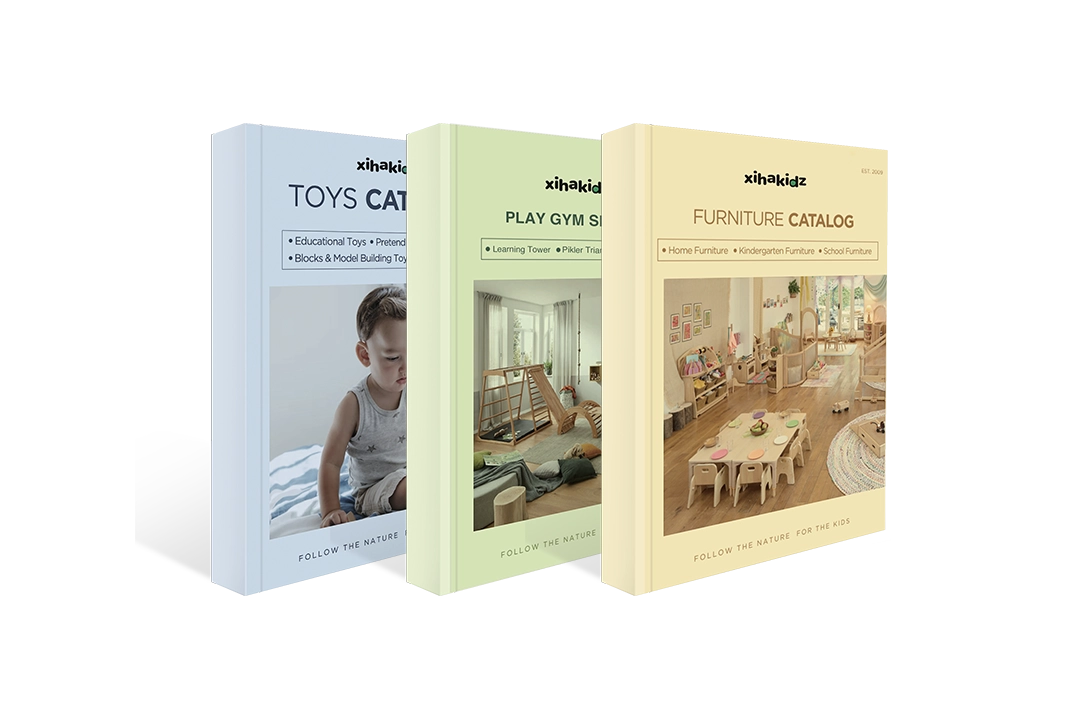Explore Our Range of Montessori Mirrors for Every Learning Space
Discover a variety of Montessori Mirrors designed to suit every child's needs and learning environment. From wall-mounted to freestanding options, our collection offers different sizes and styles to enhance self-awareness and independence. Browse through our selection to find the perfect mirror that fits your child’s unique learning journey!

Discover the Perfect Montessori Mirrors for Every Learning Environment
Creating an engaging and stimulating environment is essential for early childhood development. Our Montessori mirrors are designed to support self-exploration, sensory development, and motor skills enhancement in preschool and daycare settings. Whether you are looking for a full-length mirror for movement exercises or a wall-mounted safety mirror for visual engagement, our selection ensures both safety and functionality.
Children thrive in thoughtfully designed spaces, and Montessori mirrors provide an excellent opportunity to foster independence and confidence. Crafted with high-quality materials, our mirrors are shatterproof, easy to install, and perfectly suited for various learning spaces.
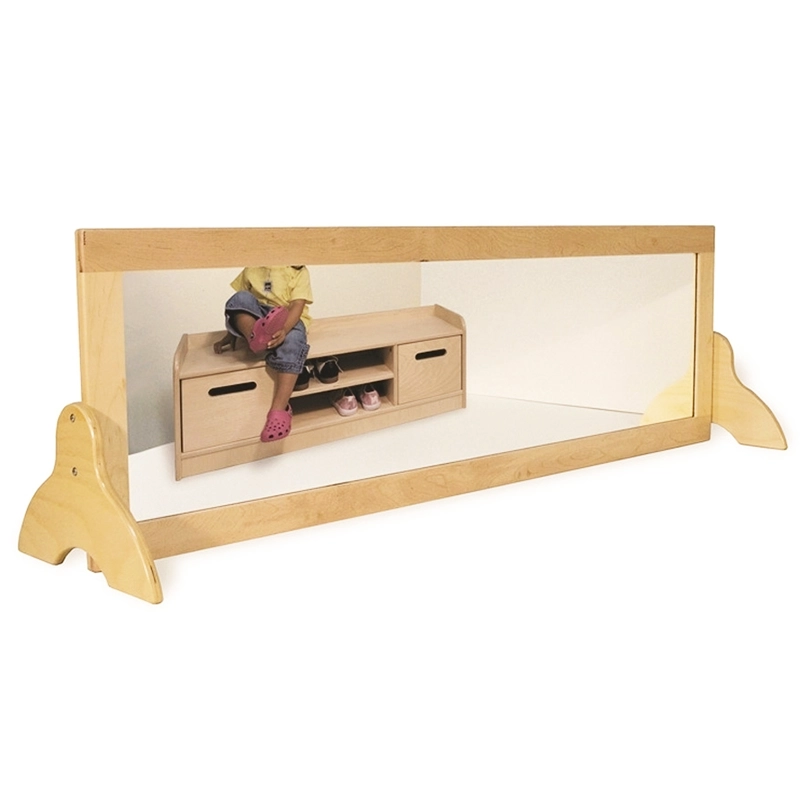
Montessori Wooden Mirror

Full-Length Montessori Mirror
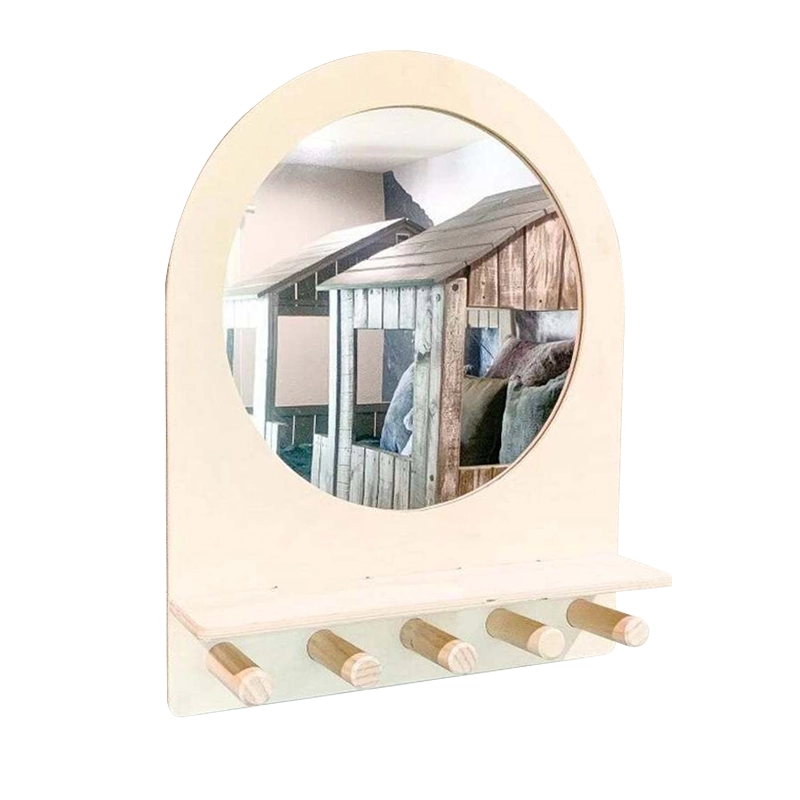
Montessori Wall Mirror with Storage Hooks
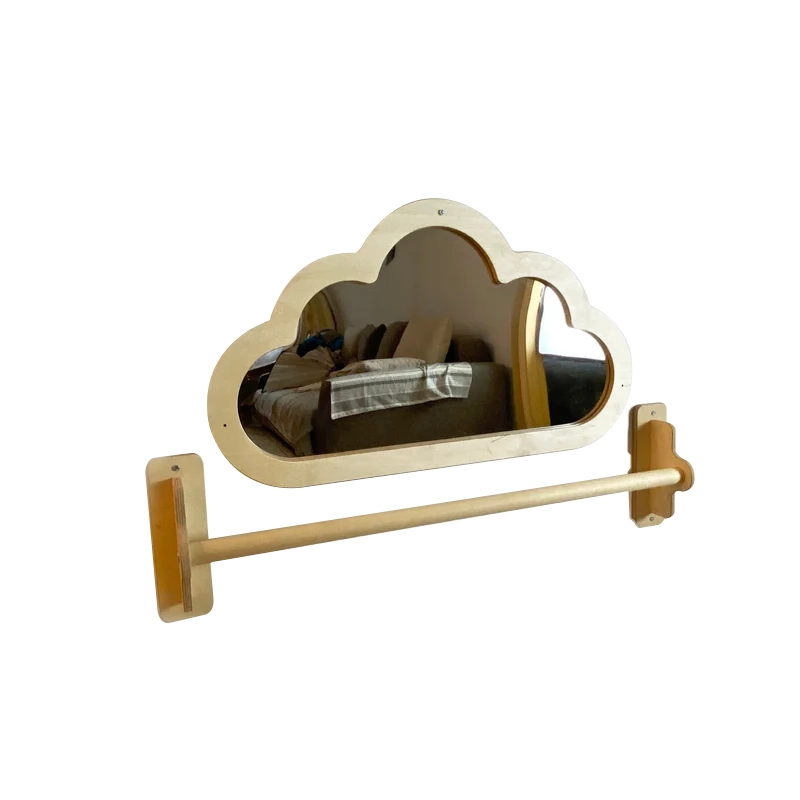
Cloud-Shaped Montessori Pull-Up Mirror
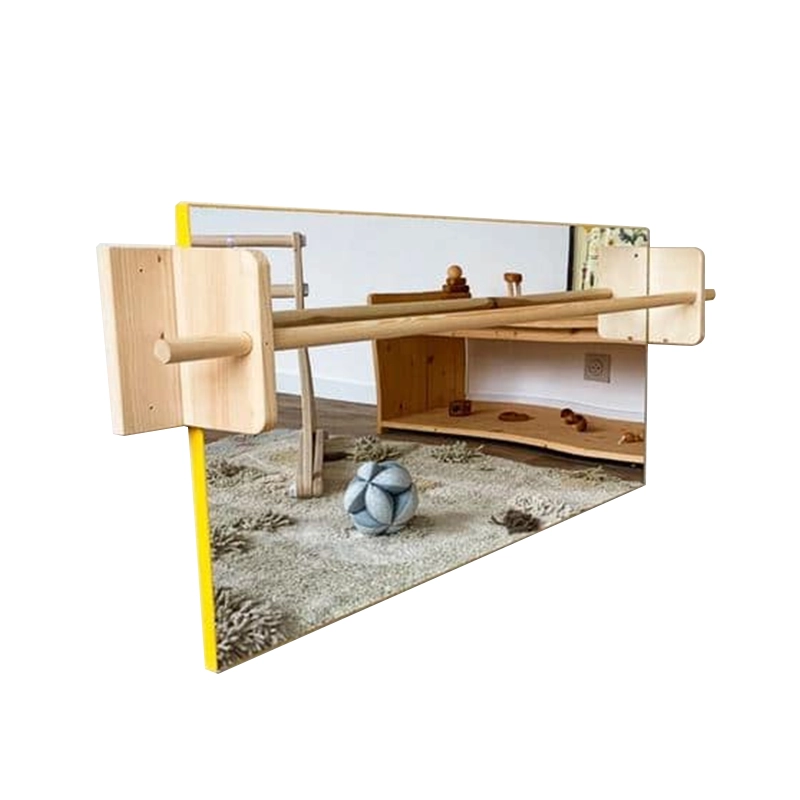
Frameless Montessori Movement Mirror

Montessori Pull-Up Mirror
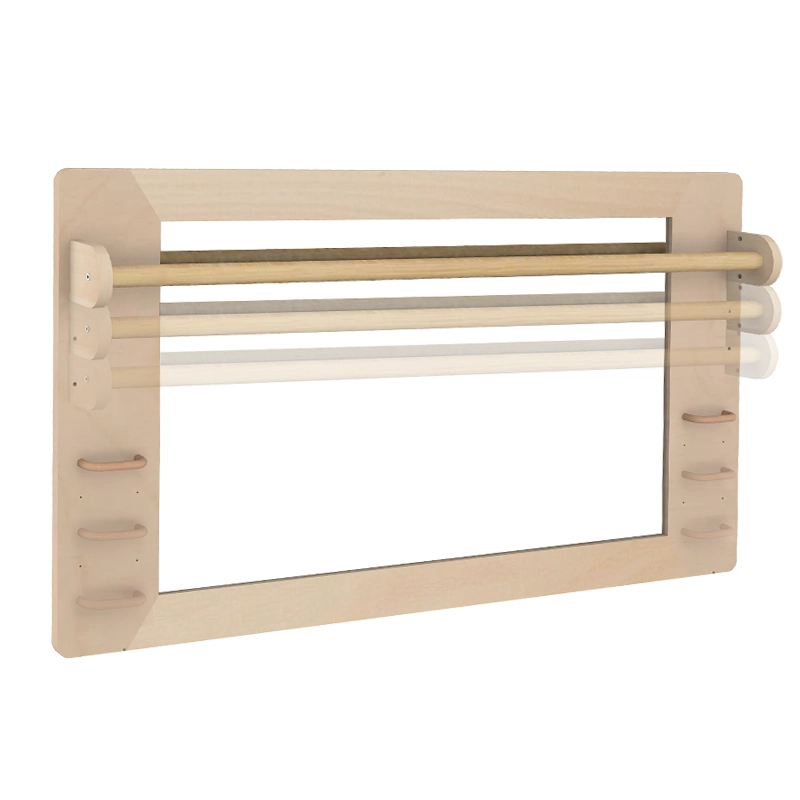
Adjustable Montessori Mirror with Pull-Up Bar

Wall-Mounted Safety Mirror
Our Expertise and Commitment
With over 20 years of experience in the educational products industry, we have honed our skills and knowledge to deliver exceptional Montessori products. We are committed to empowering children worldwide through transformative learning experiences. We believe in fostering progressive educational ideals that not only enrich lives but also contribute to building a better world. Our Montessori Mirrors are a reflection of this vision, carefully designed to nurture your child's growth, independence, and self-awareness in a safe, supportive environment.
Each Montessori Mirror in our collection is thoughtfully crafted to enhance your child’s learning experience. Our mirrors are made with premium materials that ensure durability and safety, making them ideal for daily use in both home and classroom settings. Whether it's a wall-mounted mirror to encourage self-discovery or a freestanding one to promote exploration and creativity, our products offer a wide range of options to suit every child's unique learning needs.
We prioritize the highest standards of quality and safety in every product we offer. Each Montessori Mirror undergoes rigorous testing to ensure it meets the strictest safety regulations, providing peace of mind for parents and educators alike. In addition, we are committed to sustainability, using eco-friendly materials and manufacturing processes to create products that not only benefit your child’s development but also protect our planet for future generations.
What is a Montessori Mirror?
A Montessori Mirror is a reflective surface specifically designed for children, crafted to support their developmental milestones in a safe and interactive way. Unlike traditional mirrors, which are primarily designed for adults, Montessori Mirrors are built with young children in mind. These mirrors allow children to observe themselves in a controlled and engaging manner, promoting self-awareness, emotional development, and independent learning.
These mirrors come in various shapes and sizes, with features tailored for safety and accessibility. They are typically designed with shatterproof glass, rounded corners, and non-toxic materials to ensure safety in the classroom or at home. Montessori Mirrors are also an excellent tool for encouraging independence, as they allow children to observe and understand their actions without relying on adult guidance.
The Role of Mirrors in Montessori Education
In the Montessori approach, mirrors are essential tools that encourage children to explore their physical movements, facial expressions, and interactions with their environment. They offer children the chance to see themselves in real-time, which helps them develop a strong sense of identity, confidence, and motor skills. The reflective surface becomes a window into self-discovery, allowing children to learn more about their body movements, emotions, and even facial recognition.
Common Types of Montessori Mirrors
Here are the most common types of Montessori mirrors, each offering unique benefits to children at different stages of development:
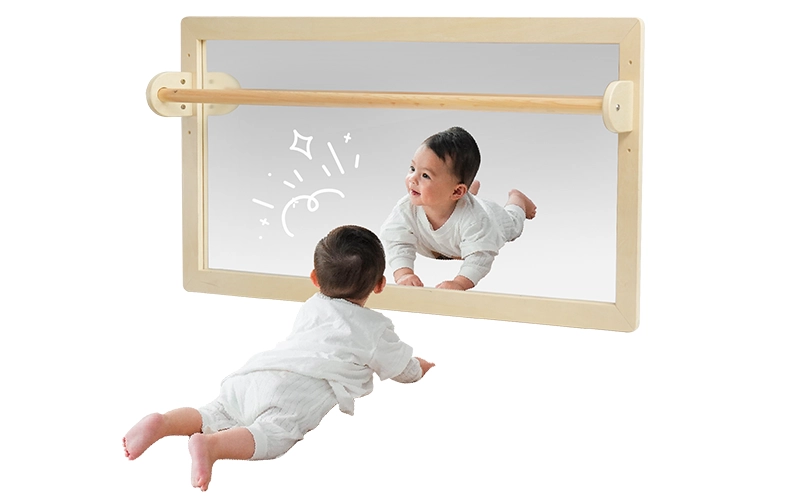
Wall-Mounted Montessori Mirror

Montessori Infant Mirror

Montessori Mirror with Bar

Portable Montessori Mirror
Benefits of Montessori Mirrors for Kids
Our Montessori mirrors are designed to foster independence, self-awareness, and cognitive growth in a safe and engaging manner. Here’s a breakdown of the key benefits Montessori Mirrors provide for kids:
Boosting Self-Awareness and Confidence
When children engage with mirrors, they see themselves as they explore, play, and interact with the world around them. This helps them build a sense of identity and encourages them to understand and express themselves better.
Encouraging Independent Exploration
Montessori Mirrors help children develop autonomy in a safe and supportive environment. For example, when placed at child-height, mirrors allow them to observe their own movements and behaviors without relying on adults for feedback
Supporting Motor Skill Development
As children move around and interact with their reflections, they gain a deeper understanding of body awareness and coordination. This helps with tasks like crawling, standing, walking, and eventually more complex movements.
Enhancing Emotional Development
When a child looks into a mirror, they can see their facial expressions in real-time, which helps them better understand what they’re feeling. This not only helps with emotional intelligence but also with learning how to manage their emotions effectively.
More detailed classification by age segment
| Age Group | Recommended Mirror Size | Purpose and Benefits |
|---|---|---|
| Infants (0-2 years) | Small, Low Floor Mirror (15" x 15" to 24" x 24") | Encourages tummy time and crawling. Helps babies observe their body movements and build early motor skills. |
| Toddlers (2-4 years) | Medium Floor or Wall-Mounted Mirror (24" x 36" to 30" x 36") | Promotes self-awareness and reflection. Ideal for walking, balancing, and learning body coordination. |
| Preschoolers (4-6 years) | Large Freestanding or Wall-Mounted Mirror (30" x 48" or 36" x 48") | Supports body awareness, coordination, and facial expression recognition. Helps build self-confidence and social interaction. |
| Early School Age (6-8 years) | Large Freestanding Mirror (36" x 60") | Encourages independent play and self-exploration. Suitable for practicing body movements and gaining spatial awareness. |
One-Stop Solution
Our One-Stop Solution is designed to provide a seamless, stress-free experience for preschool and wholesalers of children's furniture and toys. We manage the entire process from product design to delivery, so you can focus on growing your business while we handle the details. Here’s how our One-Stop Solution works:
Request Your Personalized Solution!
How to Choose the Best Montessori Mirror?
When it comes to Montessori-inspired products for your child’s development, a mirror is one of the most important tools. Not only does it support self-awareness and motor skills, but it also fosters independent exploration. Here's how to choose the best Montessori mirror for your little one:
1. Size Matters for Independent Exploration
The size of the mirror is crucial for encouraging your child’s self-exploration. Choose a mirror that’s large enough for them to view their full reflection from the floor, promoting autonomy. Ensure it’s low enough so they can access it easily without assistance.
2. Shatterproof and Safe Material
Safety is paramount when selecting a Montessori mirror. Opt for mirrors made from shatterproof or acrylic materials to prevent accidents. Traditional glass mirrors might be too dangerous for toddlers, so always check for sturdy, child-friendly materials.
3. Frameless or Rounded Edges
In keeping with Montessori principles, a frameless or mirror with soft, rounded edges is ideal. This minimizes any sharp edges that could pose a danger to young children. It also makes the mirror more visually appealing in a Montessori space, focusing on simplicity and functionality.
4. Non-Toxic and Eco-Friendly
When choosing a Montessori mirror, make sure it is made from non-toxic, eco-friendly materials. Montessori education encourages natural, safe, and sustainable items that support a child’s development while respecting the environment. Always check if the materials meet safety standards.
5. Versatility and Aesthetics
Montessori spaces are designed to be calm and aesthetically pleasing, focusing on natural, neutral tones. A mirror that fits into this aesthetic—typically wood-framed and minimalistic—can be both functional and decorative in your home. Choose one that complements the design of the room to avoid overstimulation.
6. Durability for Long-Term Use
Children grow quickly, and so do their needs. A good Montessori mirror should be sturdy enough to handle years of use. Look for mirrors with solid construction that can withstand the active hands of toddlers as they explore and engage with their reflection.
7. Ease of Installation
Make sure the mirror is easy to install in a safe and secure location. Whether wall-mounted or free-standing, it should be at a height where your child can interact with it independently. A well-installed mirror ensures no risks of it tipping over.
When to Start Using a Montessori Mirror?
A Montessori mirror is an invaluable tool for fostering a child's development, but knowing when to introduce it is key. Here's a guide to understanding the best age and developmental stages for incorporating a Montessori mirror into your child's environment:
Early Visual Stimulation(6 months ago)
While infants can't use the mirror to explore their own reflection at this stage, you can still introduce it for visual stimulation. During the first few months, babies are developing their sense of sight and can begin to focus on shapes and movement. A mirror placed at a safe and low height can captivate your baby’s attention, promoting eye tracking and visual development.
Self-Discovery and Exploration (6-10 Months)
Around 6 months, babies start to show signs of interest in their own reflection. At this stage, they might not fully understand that the image in the mirror is themselves, but they’ll likely be fascinated by the movement they see. A Montessori mirror can be a great tool to help them explore this concept. A mirror at ground level allows them to engage with their own face, hands, and movements, promoting early self-awareness and curiosity.
Building Motor Skills (12-18 Months)
Around 6 months, babies start to show signs of interest in their own reflection. At this stage, they might not fully understand that the image in the mirror is themselves, but they’ll likely be fascinated by the movement they see. A Montessori mirror can be a great tool to help them explore this concept. A mirror at ground level allows them to engage with their own face, hands, and movements, promoting early self-awareness and curiosity.
Emotional Skills(18-24 Months)
As toddlers begin to understand emotions, a Montessori mirror can serve as a tool for emotional exploration. Children around 18 months may start to recognize their emotions through facial expressions and may even mimic their expressions in the mirror. This process supports emotional intelligence and helps children understand their own feelings, which is crucial for social and emotional development.
Independence and Self-Confidence (2-3 Years)
Between 2 and 3 years old, children become more independent and self-conscious. They begin to use mirrors for self-exploration—adjusting their clothes, brushing their hair, or making faces. At this stage, a Montessori mirror fosters a child’s autonomy by giving them the space to explore their appearance and identity without adult intervention. It also helps refine their coordination, self-care skills, and sense of self.
Creative Play and Self-Reflection (3+ Years)
By the age of 3 and beyond, children use the Montessori mirror not only for self-recognition but also for imaginative play. They may begin using the mirror to experiment with different expressions, explore body movements, and engage in pretend play. This period also marks a deeper understanding of self and others, and the mirror becomes a tool for introspection and communication with themselves.
Safety Precautions When Using Montessori Mirrors
Montessori mirrors are fantastic tools for children's development, but it's important to ensure their safe use. Here are some key safety precautions to consider when using Montessori mirrors:
Make the right choice
Always opt for mirrors made from shatterproof acrylic or safety glass. Regular glass mirrors can break easily and cause injury, especially for young children. Additionally, ensure the mirror has rounded edges to prevent any sharp corners that could harm your child.
Secure Installation
When mounting a mirror, ensure it is securely fastened with proper anchors and screws at a safe height. For freestanding mirrors, check that they have a stable base to prevent tipping. Unstable mirrors can pose safety risks for exploring children.
Regularly Check
Inspect the mirror regularly for cracks, chips, or damage. Even shatterproof mirrors can become damaged over time. Make sure the mirror is still safe to use and replace it if needed.
Supervise Usage
Although Montessori mirrors promote independent play, always supervise your child when using the mirror—especially for younger children. Ensure they are using the mirror in a safe space, away from other hazards like furniture or heavy objects.
Keep It Clean
A clean mirror ensures better visibility and reduces the risk of accidents. Use non-toxic, child-safe cleaning solutions to wipe the mirror clean regularly. This will prevent smudges that could confuse your child or cause them to misinterpret their reflection.
Avoid High-Traffic Areas
Do not place the mirror in high-traffic areas like doorways or hallways. This can lead to accidental bumps or distractions. Choose a quiet, safe spot for the mirror where your child can interact with it without interference.
Where Should You Place Your Montessori Mirror?
Placing a Montessori mirror in the right spot is essential to encourage safe exploration and learning. Here are the key factors to consider for the perfect placement:
1. At Child’s Eye Level
Position the mirror at the child’s eye level to encourage independent exploration and self-awareness. This allows them to easily see themselves and interact with their reflection.
2. In a Quiet, Safe Space
Place the mirror in a calm, low-traffic area to help the child focus without distractions. This ensures a safe environment for exploration.
3.In a Well-Lit Area
Ensure the mirror is in a bright space, ideally with natural light, so the child can clearly see their reflection without glare or shadows.
4. Away from Fragile or Hazardous Objects
Avoid placing the mirror near breakables or sharp objects to prevent accidents. Surround the area with soft, protective materials for added safety.
5. In a Space That Encourages Exploration
Position the mirror where the child can move freely, such as near play materials or soft surfaces, to promote physical and cognitive development.
6. Near Other Montessori Materials
Placing the mirror near toys or learning materials encourages interaction, helping the child learn through movement and play.
FAQ
How do I clean a Montessori mirror?
Use a soft cloth and a non-toxic cleaner or a water-dish soap solution to gently clean the mirror. Avoid harsh chemicals and ensure it’s thoroughly dried to prevent moisture buildup.
Can a Montessori mirror be used to teach emotions?
Yes! A Montessori mirror helps children observe and understand their facial expressions and body language, which is useful for learning about emotions and self-regulation.
How does a Montessori mirror support independent learning?
A Montessori mirror allows children to self-discover their body movements, expressions, and motor skills, fostering a sense of independence as they explore and learn without constant adult intervention.
Is a Montessori mirror safe for toddlers?
Yes, Montessori mirrors are designed to be safe for toddlers. Make sure it is installed securely, and the materials used are durable and non-toxic.
What should I look for when buying a Montessori mirror?
Look for a shatterproof mirror, ideally made from acrylic or safety glass, with rounded edges for safety. Ensure it is the right size for your child’s age and installed securely.
What is the purpose of mirror polishing in Montessori?
Mirror polishing in Montessori is designed to create a smooth, reflective surface that encourages children to explore their own image. This helps with self-awareness and promotes independence as they observe their movements, facial expressions, and gestures.
What materials are Montessori mirrors typically made from?
Montessori mirrors are often made from durable, child-safe materials like acrylic or shatterproof glass. These materials are lightweight, safe, and less likely to break compared to traditional mirrors.
Can mirrors be used to teach Montessori math concepts?
Yes, mirrors can be used to reinforce mathematical concepts like symmetry. Children can use mirrors to explore geometric shapes, reflections, and balance, which enhances their understanding of spatial relationships.

